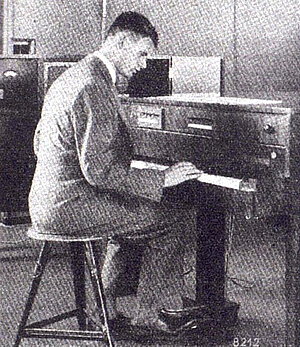1932/1933

Touchscreen instead of piano? This could be the vision of a future orchestra. As early as the 1930’s, electronics increasingly found their way into concert halls – in part thanks to HHI – and led to the invention of innovative instruments.
The Electrical Concerts, which took place on the occasions of the Funkausstellung in Berlin in 1932 and 1933, attracted major public attention. At that time, the Heinrich-Hertz-Institut was a pioneer in the field of electronic music. Its engineers were exploring the possibilities of technical innovations in the field of sound production.
The Orchestra of the Future featured electronic instruments developed at the HHI. The instrumentation consisted of two Theremin instruments, one Trautonium (named after Trautwein), a Hellertion (the name was a combination of the surnames of its inventors Helberger and Lertes), a Neo Bechstein piano (invented by Vierling, Francó, Nernst and Driescher), the electro-acoustic Vierling organ, an electric violin and electric cello, and the Saraga Generator (an opto-electric instrument made by Saraga). The public was open to and indeed impressed by these entirely novel instruments, several of these instruments are on display at the Deutsches Museum in Munich.
Paul Hindemith, an avid enthusiast for all types of new music, composed “Des kleinen Elektromusikers Lieblinge” (the Little Electro-Musician’s Favorites, 1930) for three Trautoniums. A sound sample can be found on YouTube.